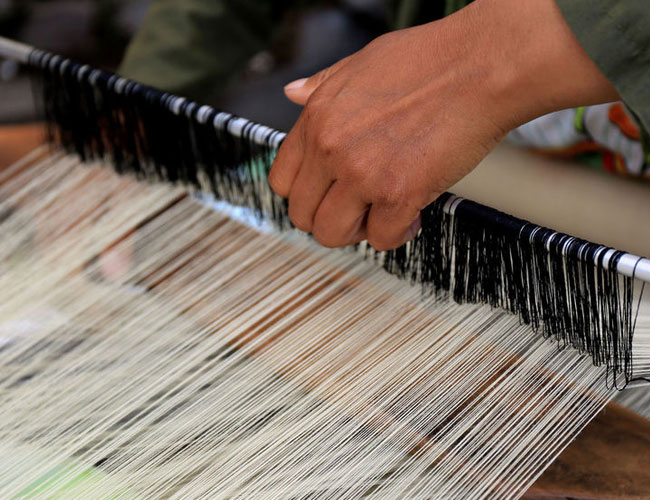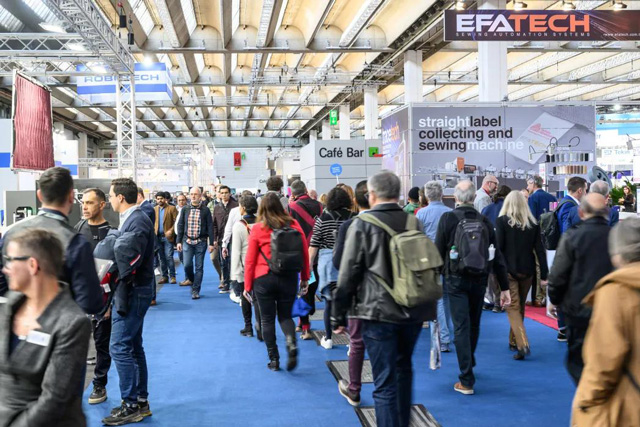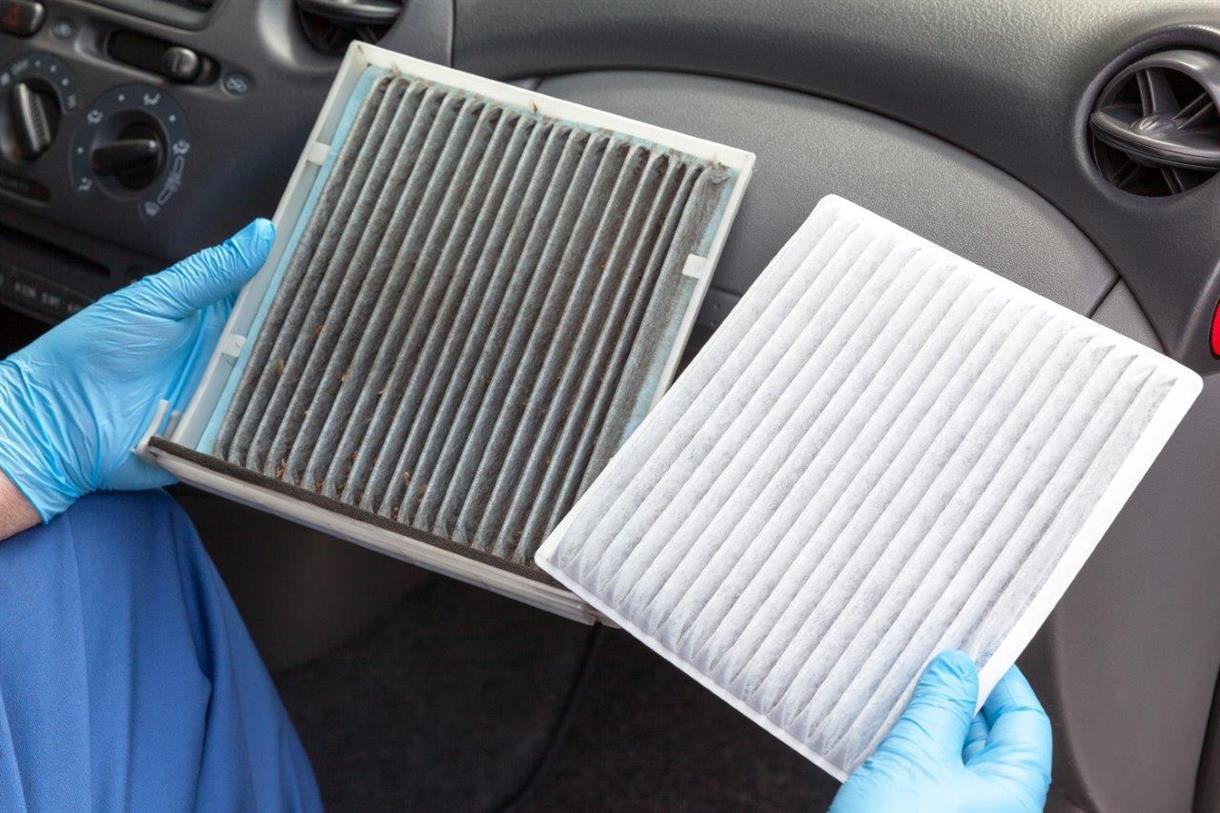
The Woven Fabric is a kind of fabric made from plant fiber raw materials through the textile process. It is generally made of cotton, hemp, and silk fibers, and can be used in the production of industrial and household products such as clothing, home textile fabrics, and blankets. The surface of the fabric has a soft, plush-like texture, with a certain degree of elasticity, and produces black smoke and general odor when burned with fire. Using a common household microscope, the structure of the fiber composition can be clearly seen when observing the fabric.
The classification of fabric according to the fabric fiber raw material points: natural fiber fabrics, chemical fiber fabrics. Natural fiber fabrics include cotton fabrics, linen fabrics, wool fabrics, silk fabrics, etc.; chemical fibers include artificial fibers and synthetic fibers, so chemical fiber fabrics have artificial fiber fabrics and synthetic fiber fabrics, artificial fiber fabrics include the artificial cotton we know (viscose fabrics), rayon fabrics and viscose fiber blended fabrics, etc... Synthetic fiber fabrics are polyester fabrics, acrylic fabrics, nylon fabrics, spandex stretch fabrics, etc.
1. Cotton fabrics: refers to cotton as the main raw material of woven fabrics. Because of good breathability, and good moisture absorption, wearing is comfortable and widely welcomed.
2. Hemp fabrics: hemp fibers as the main raw material to weave the fabric. Hemp fabric is characterized by hard and tough texture, rough and stiff, cool and comfortable, and good moisture absorption is the ideal summer clothing fabric.
3. Woolen fabric: wool, rabbit hair, camel hair, and woolen chemical fiber as the main raw material made of woven products, generally wool is the main, generally used as winter high-grade clothing fabric, with good elasticity, anti-wrinkle, brace, wear-resistant wear resistance, warmth, comfortable and beautiful, pure color and other advantages.
4. Silk fabrics: a high-grade variety of textiles. Mainly refers to mulberry silk, sericulture silk as the main raw material of woven products, it has the advantages of being thin and light, soft, smooth, elegant, gorgeous, and comfortable.
1. Rayon (viscose fabric): soft luster, soft feel, good moisture absorption, and breathability, but poor elasticity, poor wrinkle resistance.
2. Rayon fabric: luster on the silk surface is bright but not soft, bright colors, smooth feel, soft and drapey, but not as light and airy as real silk.
3. Polyester fabric: high strength and elasticity recovery ability. Firm and durable, free from ironing, and easy to wash and dry. But poor moisture absorption, wearing a stifling feeling, easy to produce static electricity and dust staining.
4. Acrylic fabric: known as "artificial wool", bright color, wrinkle resistance, and warmth are better while having light resistance, heat resistance, and lighter quality, but poor moisture absorption, wearing a sense of stuffiness.
5. Nylon fabric: nylon strength and wear resistance is good, ranking first of all fibers; nylon fabric elasticity and elastic recovery are very good, but the small external force is easy to deform, so its fabric in the process of wearing easy to become wrinkled; ventilation and breathability are poor, easy to produce static electricity; its moisture absorption in synthetic fibers is a better variety, so the clothing made of nylon than polyester clothing wearing comfortable.
6. Spandex elastic fabric: spandex is a polyurethane type of fiber, with excellent elasticity. General products do not use 100% of polyurethane, more in the fabric mixed with about 5% of the proportion to improve the elasticity of the fabric, suitable for tight-fitting clothes.
Clothes, hats, rags, screens, curtains, mops, tents, propaganda banners, cloth bags for things, shoes, books from ancient times, drawing paper, fans, towels, cloth closets, ropes, sails, rain coverings, ornaments, flags, etc.

A nonwoven is a textile made up of layers of fibres which can be carded webs or thin webs of fibres made directly from spinning methods, with a haphazard or directional laying of fibres, a simple manufacturing process and low cost.
Non-woven fabrics are moisture-proof, breathable, flexible, light, non-combustible, easily decomposed, non-toxic and non-irritating, colorful, inexpensive and recyclable. If mostly made of polypropylene (pp material) granules as raw material, it is produced in one continuous step by high-temperature melting, silk spraying, laying outline and hot pressing and coiling.
1. Spunlace Nonwoven Fabrics: The hydroentanglement process is a high-pressure, micro-fine water jet that is sprayed onto one or more layers of fibres so that the fibres are entangled with each other and the web is reinforced with a certain strength.
Here is the Spun Lace Nonwoven Fabric series. Click Here to view.
2. Thermally bonded nonwoven: thermally bonded nonwoven refers to the addition of fibrous or powdered hot-melt bonding reinforcement to the fibre web, which is then heated and melted and cooled to reinforce the fabric.
Here is the Thermal Bonded Nonwoven Interlining series. Click Here to view more.
3. Pulp air flow into the network of non-woven fabrics: air flow into the network of non-woven fabrics can also be called as dust-free paper, dry paper non-woven. It is the use of airflow into the network technology to open the wood pulp fiber board into a single fiber state, and then use the airflow method to make the fiber agglomeration in the formation of network curtain, fiber network and then reinforced into cloth.
4. Wet non-woven fabric: Wet non-woven fabric is placed in the aqueous medium of fibre raw materials into a single fibre while making different fibre materials mixed, made of fibre suspension pulp, suspension pulp is transported to the web-forming mechanism, the fibre in the wet state into the web and then reinforced into cloth.
5. Spunbond nonwoven: Spunbond nonwoven is formed after the polymer has been extruded and stretched to form a continuous filament, the filament is laid into a web, and the fibre web is then bonded by itself, thermally bonded, chemically bonded or mechanically reinforced, so that the fibre web becomes a nonwoven.
Here is the Spunbond Nonwoven Fabric series. Click Here to view more.
6. Meltblown nonwoven: The process of meltblown nonwoven: polymer feeding - melt extrusion - fibre formation - fibre cooling - web formation - reinforcement into cloth.
Here is the Meltblown Nonwoven Fabric series. Click Here to view more.
7. Needle-punched nonwoven: Needle-punched nonwoven is a type of dry nonwoven. Needle-punched nonwoven uses the piercing effect of a felting needle to reinforce the fluffy fibre web into a cloth.
Here is the Needle-punched Nonwoven Fabric series. Click Here to view more.
8. Sewn nonwoven: Sewn nonwoven is a type of dry nonwoven. The sewn method uses a warp-knitted coil structure to reinforce fibre webs, yarn layers, non-textile materials (e.g. plastic sheets, plastic thin metal foils, etc.) or a combination of them to make a nonwoven.
9. Hydrophilic nonwovens: mainly used in the production of medical and hygiene materials to get a better feel and not scratch the skin. For example, sanitary napkins and sanitary pads make use of the hydrophilic function of hydrophilic nonwovens.
1. Non-woven fabrics for medical and hygiene purposes: surgical gowns, protective clothing, disinfection wraps, masks, diapers, civil wipes, wiping cloths, wet face towels, magic towels, soft towel rolls, beauty products, sanitary napkins, sanitary pads, and disposable sanitary cloths, etc.
2. Nonwoven for household decoration: wall coverings, tablecloths, bed sheets, bedspreads, etc.
3. Nonwovens for clothing: lining, bonded lining, wadding, shaping cotton, various synthetic leather backings, etc.
4. Nonwovens for industrial use: filter materials, insulation materials, cement packaging bags, geotextiles, coverings, etc.
5. Nonwoven fabrics for agriculture: crop protection cloth, rice-raising cloth, irrigation cloth, insulation curtain, etc.
6. Other non-woven fabrics: space wool, heat insulation, sound insulation materials, oil-absorbing felt, cigarette filters, bagged tea bags, etc.

Wovens are short fibres such as cotton, linen and cotton, which are spun and woven together from one yarn to another.
Nonwovens are fabrics that do not need to be spun and woven. The textile staple fibres or filaments are oriented or randomly braced to form a fibre network structure.
In simple terms, Nonwovens are formed by the fusion of fibre molecules, and Wovens are formed by the interweaving of fibres.
Woven fabrics are strong and durable and can be washed many times.
Non-woven fabrics cannot be washed many times due to their relatively simple manufacturing process and low cost.
There are woven fabrics according to different materials can be made into clothes, hats, rags, screens, curtains, mops, tents, propaganda banners, cloth bags for things, shoes, ancient books, drawing paper, fans, towels, cloth closets, ropes, sails, rain coverings, decorations, national flags, etc.
Nonwoven fabrics are mostly used in industry, such as filter materials, insulation materials, cement packaging bags, geotextiles, cladding fabrics, etc.: medical and health care fabrics, home decorative fabrics, space wool, thermal and sound insulation materials, oil-absorbing felt, cigarette filters, bags of tea bags, etc.
Non-woven fabric is environmentally friendly and biodegradable and can be used as the outer packaging of storage bags and storage boxes, but also as raw materials for environmental protection bags.
Nonwoven fabrics are non-biodegradable and costly. Used to make wallpaper, cloth bags and other items with more non-woven fabric, from the production process, it is not woven with thread, so it is stronger, not easy to break, while ordinary fabrics are generally more woven.
The surface of woven fabrics often has a light yellow layering feeling;
The surface of non-woven fabric is more like adhesive;
The surface of the woven fabric has a soft, fluffy texture;
The surface texture of non-woven fabric is hard;
The woven fabric has certain elasticity when stretching;
Non-woven fabrics have less elasticity;
There is a smell of black smoke from textile fabrics;
Non-woven fabrics will produce a lot of smoke;
Using a common household microscope, the structure of the fiber can be clearly seen by observing the spinning cloth;
The characteristics of non-woven lignin or resin polymer.
Let's talk about the difference between non-woven fabrics and woven fabrics, Thank you for taking the time to read the content of this website. Don't forget to search for more information about textile and non-woven fabrics on this website.
All Rights Reserved: https://www.groupgf.com/info-detail/woven-vs-nonwoven-fabric
Copyright Notice: This is an original (translated) article from G&F Group Inc., please indicate the source from G&F GROUP INC... If there is any infringement, please contact us first.
 Techtextil & Texprocess Rounded Off
Techtextil & Texprocess Rounded Off
 Nonwovens in daily life ----- filtration
Nonwovens in daily life ----- filtration
 Nonwovens in daily life ----- automotive
Nonwovens in daily life ----- automotive
 What is SAP – superabsorbent polymers
What is SAP – superabsorbent polymers